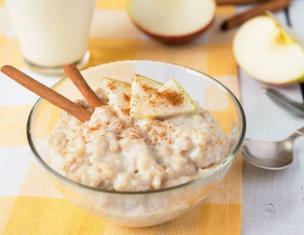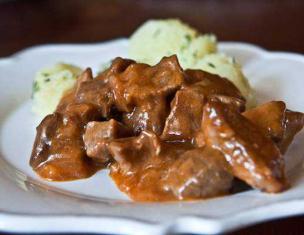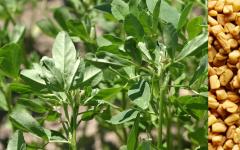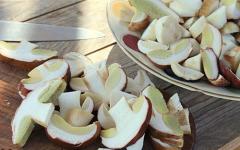Sweet pepper is undoubtedly one of Nature's best gifts to humanity. Sunny, imbued with the living energy of the sun and summer, it always becomes a decoration for any summer and autumn table. While garden beds are still delighting summer residents with their harvest, it’s time to think about storing peppers for the winter.
It is pepper, thanks to its taste and beautiful green, yellow and red colors of the fruits, that has the greatest chance, with the right approach, to become a hit on winter holiday tables.
Top 7 most profitable pepper preparations
It’s no secret that we will always strive to prepare a masterpiece, spending as little time and money as possible. And this is true in our fast-paced, stress-filled life. Therefore, out of thousands of different methods and recipes, today’s selection includes just such... well, so that it’s both quick and “masterpiece”
1. Frozen peppers
A very convenient form of preparation for the winter. Fresh frozen peppers retain their aroma, which is a godsend for winter dishes: on a February day, the smell of fresh peppers will be akin to a holiday). Peppers are frozen for different purposes, and the method of preparation depends on the purposes. What are the possible options?
As a dressing for dishes (soups, purees, stews)
It’s generally simple here: you peel the peppers from the seeds and cut them as soon as you think of them - into rings, strips, cubes, slices... put them in portions or all together, put them in a bag and put them in the freezer.
As a ready-made semi-finished product
For this type of workpiece you need:
In winter, after defrosting such semi-finished products, just add pepper, garlic, oil or lemon juice to taste - and you get an incredibly tasty and beautiful salad.
2. Peppers for stuffing
A very popular and profitable product. Stuffed peppers have become a favorite dish for many, so such recipes are always relevant. We present the two simplest options.
1. Prepare filling based on:
- Water - 1 l
- Sugar - 70 g
- Salt - 35 g
- Citric acid - 8 g
2. Place the peppers, peeled from stems and seeds, in boiling water for 2 minutes and immediately cool in cold water. Place them one inside the other and place them in a jar or, flattening them, place the peppers sideways on top of each other.
3. Pour boiling liquid over the finished products and sterilize them:
- liter jars - 10-15 minutes,
- 2 liter - 20 min,
- 3 liter - 25 min.
4. Roll up immediately.

In winter, just open such a jar - and you can immediately stuff the peppers! Convenient, fast and tasty!
3. Lecho
An extremely interesting dish that came to us from Hungary. Classically, these are stewed vegetable mixtures flavored with spices. A characteristic feature of traditional lecho is the mandatory presence of 3 components: sweet peppers, tomatoes and onions.
But, as often happens with popular dishes, each housewife began to interpret it in her own way, as a result of which today lecho is a variety of combinations of bell peppers, tomatoes, carrots, fried onions, smoked meat and smoked pork sausage and... even everything that you think of adding there)
Recipe for almost classic Lecho
You will need:
- Bell pepper - 2 kg
- Tomatoes - 2 kg
- Onions - 1 kg
- Vegetable oil - 150 g
- Vinegar 9% - 3 tbsp. spoons
- Sugar - 4 tbsp. spoons
- Salt - 2 teaspoons
- Black peppercorns - 1 teaspoon
- Allspice - 4 pcs
- Bay leaf - 2 pcs
Preparation:
In the next video there is another recipe for lecho: from bell peppers, carrots and onions.
Lecho can be used both as a separate dish and as a side dish, and in winter you will enjoy both.
4. Adjika
Spicy seasonings have always been in honor among the people, and - one of them, In the classic version, adjika is red, and, carefully ground with salt. But it just so happened that the boundaries of the recipe began to gradually expand, including what, by definition, should not be there - tomatoes, carrots and even. Agree, today almost any hot sauce containing hot pepper and garlic is called adjika. We will not deviate from the established tradition and will consider 2 recipes for wonderful sauces under this traditional name.
Original mild adjika
You will need:
- Bell pepper - 1.5 kg
- Tomatoes - 5 kg
- Carrots 1 kg
- Garlic - 350 g
- Sugar - 300 g
- Salt - 100 g
- Vinegar 9% - 250 ml
- Vegetable oil - 1 cup (250 ml)
Preparation:
Adjika Georgian
You will need:
- Bell pepper - 5 kg
- Hot pepper - 500 g
- Tomato paste - 500 g
- Tomatoes - 1.5 kg
- Carrots - 1 kg
- Onions - 2.5 kg
- Garlic - 5-6 pcs.
- Parsley - 1 bunch
- Fresh and dry cilantro - 1 +1 bunch
- Salt - to taste
Preparation:
Grind all ingredients in a meat grinder (blender), put the mixture on fire, cook for 5-10 minutes. Place in heated jars and roll up. 
As you can see, both recipes are simple to execute, but different in taste, although both are “adzhika”
5. Pepper in marinade
Pickled peppers become a decoration for any table. Red, yellow and green spicy-sweet slices look great among snacks and captivate with their spicy aroma and excellent taste. Properly prepared preparation is always a win-win option: pickled peppers are incomparable in both taste and appearance!

Pickled pepper recipe
You will need:
- Bell pepper - 8 kg
- Sugar - 400 g
- Salt - 4 tablespoons
- Vinegar 9% - 400 g
- Sunflower oil - 400 g
- Bay leaf - 4-5 pieces
- Cloves - 4-5 pcs.
- Black peppercorns - 12 pcs.
- Allspice - 4-5 pcs
- Water - 2 l
Preparation:
Pepper in tomato-garlic sauce
A tasty and aromatic preparation for the winter. It’s easy and quick to prepare, and will find a lot of fans).
You will need:
- Sweet pepper - 1 kg
- Tomatoes - 700 g
- Garlic 3-4 cloves
- Sugar - 2.5 tbsp
- Salt - 1.5 tbsp. spoons
- Vinegar (apple, wine) - 30 ml
- Vegetable oil - 30 ml
Preparation:
From the specified amount of pepper you get 2 jars of 0.5 liters of the finished product.
Another way to prepare bell peppers in tomatoes will be shown by Tatyana, a regular author of our Youtube channel:
Fried peppers in marinade
Original blank; Peppers in this version are not freed not only from seeds, but even from the stalk. In this form they are fried and only then filled with marinade. In winter, these peppers go out with a bang. Moreover, by placing peppers of different colors in different jars, you miraculously simultaneously make preparations that are even different in taste - here you have a bright winter variety!
In the next video - one of the options for preparing fried peppers in marinade
And the pepper marinade itself
Just as cucumber pickle has “its own purpose,” so the pepper marinade that remains after the pepper has migrated to the table can develop a “second life.” Remember how much delicious marinade from canned food you had to pour out? But our summer residents also found the opportunity for “waste-free summer cottage production”!
6. Stuffed peppers
In summer, housewives most often stuff peppers with minced meat and rice or vegetable mixtures. The same peppers can come to our winter tables. Here are two recipes that, even if they are not useful in this particular version, will certainly serve as a starting point for a new idea on how to stuff peppers to send them for long-term storage.
You will need:
- Bell pepper - 10 pcs
- Zucchini - 500 g
- Carrots - 1 pc.
- Onions - 2 pcs.
- Tomato juice - 1 l
- Peppercorns, salt, herbs
Preparation:
And in the next video - advice on how to prepare stuffed peppers for freezing for the winter:
7. Vegetable pepper caviar
What everyone will love in winter is pepper caviar with vegetables. It can be used as a side dish, spread on bread, or simply gobbled up with spoons, thanks to summer for such a wonderful, delicious opportunity!
What needs to be done for this? And quite a bit!
You will need:
- Pepper - 2.5 kg (meaty varieties are best)
- Carrots - 150 g
- Onion - 250 g
- Tomatoes - 200 g
- Parsley root - 1 pc.
- Celery root - 1 pc.
- Ground black pepper - 0.5-1 teaspoon
- Ground allspice - 0.5-1 teaspoon
Preparation:
Caviar is capricious in storage, so you should not reduce the sterilization time, this will guarantee long-term storage. After sterilization, roll up the jars and leave them upside down on the lids under a blanket to cool for a long time.
It's funny that in its homeland, in America, pepper is a perennial shrub, and even grows just like that, without care or care... Our pepper (and us along with it) is not so lucky, and soon the first frosts will deprive us of the opportunity to bring these wonderful fruits, full of juicy summer warmth. 
While there is time and peppers in the beds, we need to “re-register” them in cozy glass jars, so that on a frosty December day they begin their triumphal parade across our winter tables, where they will become the most welcome guests and favorites)
06.06.2013 | Prepared: 1934 | Grade: 5.0
Methods for slicing sweet bell peppers
Before cutting bell peppers for salads or other dishes, they must be thoroughly washed and the stem and seeds removed.
- If you cut the pepper into strips or cubes, you can cut off the flesh from four sides of the stalk, then remove the membranes and wash the inside of the pepper.
- If you plan to cut the pepper into strips, then cut all four parts lengthwise into thin slices. If smaller strips are needed, then the pepper slices are cut into two and then cut into strips. Multi-colored pepper straws are perfect for decoration.
- If it is necessary to cut the pepper into rings or half rings, then first remove the stalk, cutting it out from the inside, then wash the pepper and cut it into rings.
Preparing peppers for stuffing
In order to prepare stuffed peppers, you need to cut out the stem in a circle. Remove partitions and seeds from the hole and rinse with cold water. That's all, the peppers are ready for stuffing. To make it softer, you can keep it in boiling water for a couple of minutes, let it cool and fill the peppers with minced meat.
How to peel bell peppers. The outer skin is quite poorly digested by our body, so it is better to remove it before consumption. In order to quickly remove the skin from the pepper, it must be thoroughly washed, dried and placed on a wire rack in the oven. As soon as you notice that the skin of the pepper is bubbling, you can remove it from the oven and wrap it in a damp towel to cool. After such actions, the skin will come away from the pulp perfectly.
Bell pepper for children
Despite the fact that pepper contains many vitamins and microelements beneficial for the human body, children often refuse to eat it. In order to change the situation and attract children's attention to pepper, you can try to play not only with its color, but also with the shape of the cut. You can decorate any dish in an original way, and the child will eat with great pleasure not only the dish itself, but also the decoration. A technique that works well is when you invite your child to independently lay out interesting figures from chopped peppers or offer peppers as a plate for any suitable filling.
How to cut pepper into strips? Beautifully sliced bell peppers give any dish a festive look. It can be used in a variety of salads, stews, etc. The process of cutting pepper into strips is simple. For this you will need: a cutting board and a well-sharpened knife, as in the video. Along the way, you can read.
How to cut pepper into strips? Slicing bell peppers for salad
 How to properly cut peppers into strips Before chopping the peppers, prepare them. Wash thoroughly under running, cold water. Remove the stem. It can be cut or pressed towards the tip of the pepper, and then pulled out and thrown away.
How to properly cut peppers into strips Before chopping the peppers, prepare them. Wash thoroughly under running, cold water. Remove the stem. It can be cut or pressed towards the tip of the pepper, and then pulled out and thrown away.
Next, cut the pepper lengthwise and remove the white-veined seeds. Rinse the inside of the pepper. Now you can cut the pepper lengthwise into pieces to make it easier to cut into strips. Take the knife in your right hand and cut the pepper into strips on a cutting board. We invite you to watch the video. find out
Lecho and salads, stews and pizzas, soups and sauces, appetizers and food decorations - sweet peppers have a very wide range of uses in cooking. We all know how to handle this vegetable, but the phrase “live and learn” was not coined in vain, and today we will learn again how to properly cut pepper into strips and more. In cooking, everything was invented before us competently, intelligently and simply, so forget your home-grown method of slicing “at random”, from now on we will do everything beautifully.
The adjective Bulgarian has long been grafted onto sweet peppers. However, three main varieties with red and green fruits are common in the CIS: Novocherkassk, Maikop and Bulgarian. The taste of red peppers is more intense, and they also benefit from the benefits, at least due to the ascorbic acid content.
Yellow and orange varieties are one step lower in taste than red peppers, but they are best used for winter preparations.
Multi-colored peppers are loved not only for their taste, but also for their decorative role. After all, a salad with pepper straws in red, yellow, orange and green will look so beautiful and sunny, as well as lecho with four-color slices and a colorful stew.
Primary processing of pepper
Before you start cutting peppers, you need to properly prepare the fruits:
- Wash the fruit thoroughly under running cool (but not cold) water.
- Then we wipe it with a paper towel and start cutting.
To cut the peppers, you will need a cutting board, a large knife for chopping and slicing, and a small, pointed paring knife.
Don't be fooled by the weird shape of the pepper. It can be chopped into very even, beautiful strips, like other types of vegetables. Depending on the thickness of the straw, peppers are used in different dishes.
- Thin straws have a thickness of 0.2-0.3 cm and are used for fresh and warm salads, cabbage starters, some fresh soups, as well as fillings and snacks.
- Standard straws are 5-6 mm thick; they are used more widely: soups, stews, gravies, in particular lagman, salad.
How to cut bell peppers into strips
First way
- Place the washed and dried fruit on a cutting board in the center, turning it so that the handle is on the side of the hand holding the knife. Cut off the top of the pepper with the stalk, making a cut directly under the bend line located under the stem.

- After this, we turn the pepper over and cut off its lower part, also under the bend line.

- Now you need to place the pepper on the board with the bottom cut and make a cut along its side wall. But we don’t need to cut the whole fruit in half, we only need one wall.

- Place the pepper on its side, open it along the cut and remove the seeds with white membranes (partitions) with a knife. The easiest way to do this is to use a paring knife.

- Open the peeled pepper and cut it into 2 halves crosswise.

- After this, stack the halves and chop the pepper into strips of the required thickness: 0.2 cm for thin strips and 0.5 cm for thick ones.

Second way
- We wash the pepper, wipe it with a napkin and place it sideways on the board. Using a knife, cut off the side walls of the pepper, without reaching the seed with the knife.

- After this, cut the cut plates along the length into strips of the required thickness.


- If you want to get an even straw, then the top and bottom of each plate should be cut off.

Lecso is a traditional Hungarian winter salad recipe that includes twisted tomato, onion and lots of sweet pepper. However, you need to cut peppers for lecho not into strips, as some home cooks believe, but into slices.
In addition, this cut is used in stewing and baking, and if the slices are thin, then also for soups, salads and pizza.
- We cut the pepper into three or four parts on the sides, without touching the testes. The lobes should not be flat, but cup-shaped.

- After this, chop the pepper lengthwise into slices of the thickness you need.

No less popular is preparing for the winter from pickled peppers, cut into large slices. In this case, cutting is even easier.
- Cut the pepper in half lengthwise.

- Then remove the seeds from the center of the pepper halves.

- After cleaning, cut each half lengthwise into 2-4 pieces, depending on the desired cutting thickness.

Cubic cutting of pepper is perhaps the most popular in cooking. Pepper cubes are added to soups, sauces and gravies, stews, salads, appetizers, and side dishes.
Dicing is a continuation of the julienne method:
- Cut off the top and bottom of the pepper, then cut the fruit along the front wall.

- Place the pepper on a board, open it along the cut and remove all the seeds along with the partitions.

- Now cut the pepper layer into 2 parts and cut into strips of the thickness you need.

- After this, we collect the straw slices into a pile, beat them with a knife from one edge, leveling them, and chop them across the bars into cubes.

The second method of cutting peppers into cubes involves initially chopping the fruit into thin slices:
- Cut the pepper into 4 parts on the sides.

- After this, we cut off the white membranes with a sharp knife and at the same time slightly align the pepper slices.

- Then we chop each piece, first lengthwise into strips, and then across into cubes.

Now that you have figured out how to cut bell peppers into strips, slices and cubes, your culinary knowledge has been replenished with a worthy trophy.
In addition, our website presents detailed master classes with videos on different types of slicing, which will teach you how to properly cut into strips not only peppers, but also cabbage, carrots, onions, potatoes and other vegetables.
The phrase “Magic vegetable slicing” reflects exactly what you can do with vegetables using one knife in literally a short period of time from 5 to 20 minutes. The options (methods) we provide for cutting vegetables will help you quickly and beautifully decorate an ordinary or festive table.
To beautifully decorate vegetable slices, you can use not only vegetables, but also green leaves, cheese, meat, and less often fruits and berries. Perfect for decorating olives and olives.
I won’t deny that any business requires experience, so I recommend taking a few cucumbers, tomatoes, bell peppers and filling your hand a little. In just 30 minutes, you will be ready to make any vegetable cutting from the options we provide in the photo, just as fabulously beautiful. A prerequisite for preparing, be it vegetable... slicing, is well-sharpened, sharp knives.
This option for slicing vegetables is perfect for a festive table, buffet table, or get-togethers with friends. Can be served with any food or drink. Place the lettuce leaves on a large round dish so that they protrude slightly from the edges. Place the sauce in the center of the dish (I use 67% mayonnaise). We cut young carrots, sweet peppers of different colors, and a stalk of celery into cubes of the same size. Fresh cucumber can be sliced, or a little diagonally, like sausage. We lay out in a heap the sticks of celery stalk, olives or black olives, sweet peppers, whole cherry tomatoes, sticks of young carrots, nickels or sticks of fresh cucumber. Garnish the sauce with curly parsley leaves in a circle. Simple and angry.

Cut off the ends of a fresh cucumber and cut it lengthwise into four parts. Cut the tomatoes into two parts and cut each part lengthwise into slices. Cut the sweet pepper into two parts, remove the seeds and stem and cut into cubes lengthwise. Place three leaves of green salad on a dish. Place in the middle of the dish in the form of a bunch of parsley leaves. Place slices of sweet pepper, slices of fresh cucumber and tomato in random order on a platter.

Cut vegetables (meaty sweet peppers, fresh cucumbers) lengthwise into slices. Bell peppers should be removed from seeds and stems. Cut the tomatoes into large slices. Arrange beautifully on a platter and garnish with curly parsley leaves. Vegetables can be sprinkled with lemon juice and olive oil.

Cut small tomatoes into medium-sized slices. Cut the fleshy pepper into half rings, removing the seeds before slicing. Fresh radishes and cucumbers in rings. We place lettuce leaves on a dish, and beautifully place tomato slices on them, a little further than half a ring of sweet pepper and finish with rings of radish and fresh cucumber.

Cut fresh cucumbers into slices and tomatoes into half rings. On the dish, place slices of cucumber around the perimeter of the entire dish, and slices of fresh tomato in the middle. Sprinkle everything with finely chopped green onions, parsley and dill. Sprinkle with apple cider vinegar and aromatic sunflower oil.

Using a vegetable peeler, cut the fresh cucumber into thin slices lengthwise. Onions in slices and sweet peppers in cubes. Tomatoes can be cut into four parts. We beautifully decorate the vegetable slices with these vegetables, as in the photo. Garnish with lettuce and green leaves.

We cut fresh cucumbers into nickels, bell peppers into slices, tomatoes into thin slices. Place cucumber nickels on one side of the dish, tomato slices on the other side, and bell pepper slices with herbs in the middle.

When cutting vegetables, do not separate them. Peel the daikon and cut it into two parts lengthwise, and then cut each part into thin slices. Cut the tomatoes in half and cut lengthwise or crosswise into the same slices as daikon. Do the same with fresh cucumber as with daikon. Peel the bell pepper from seeds and finely chop it crosswise into half rings. We cut the onion feathers beautifully at the ends diagonally. We lay out the prepared vegetables on a dish like this - move half a tomato a little to the side to make a kind of ladder and put it on the dish, then in the same way put daikon, green onions, cucumber, a few olives or black olives and so on until the products meet . Place bell pepper half rings in a heap on top in the center. This is how beautifully you can decorate sliced vegetables in 15 minutes.

Cut the cucumber crosswise into nickels, tomatoes into slices, sweet pepper crosswise into rings. Place cucumbers and tomatoes alternately on green salad leaves. Decorate with olives and parsley. And place bell pepper rings in the middle of the dish.
I hope everything is transparently simple and the question “How to make beautiful vegetable slices?” For you now it’s a mere trifle.









